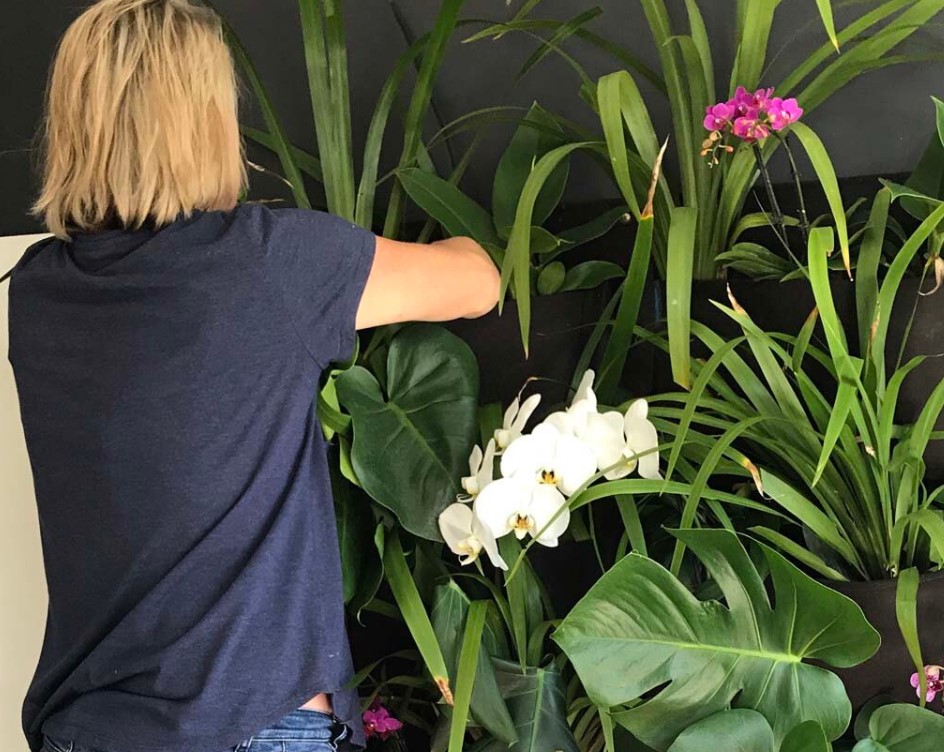In an era of rapid urbanization, sustainable living has become more than just a trend; it’s a necessity. As concrete jungles sprawl across our landscapes, green spaces dwindle, leaving city dwellers longing for a connection to nature. However, amidst this concrete labyrinth exists a solution that revitalizes urban landscapes and promotes sustainable living: vertical gardening.
What is Vertical Gardening?
Vertical gardening, also known as vertical farming or green walls, is a revolutionary approach to cultivating plants in limited spaces. Unlike traditional horizontal gardens, vertical gardens utilize vertical space, transforming bare walls, balconies, and rooftops into lush greenery. By harnessing unused vertical surfaces, this innovative technique maximizes green space in urban environments, offering many benefits ranging from environmental sustainability to aesthetic appeal.
The Environmental Impact:
One of the most compelling aspects of vertical gardening is its environmental impact. In densely populated cities, green spaces are scarce, contributing to air pollution, urban heat island effects, and biodiversity loss. Vertical gardens act as natural air purifiers, filtering harmful pollutants and releasing oxygen into the atmosphere.
Additionally, these green walls serve as insulators, reducing energy consumption by moderating indoor temperatures and mitigating the urban heat island effect.
Moreover, vertical gardens play a crucial role in biodiversity conservation by providing habitats for insects, birds, and other wildlife. By reintroducing greenery into urban landscapes, these vertical ecosystems promote ecological balance and enhance urban biodiversity, fostering a healthier environment for humans and wildlife.
Innovative Vertical Gardening Solutions:
The beauty of vertical gardening lies in its versatility and adaptability. Vertical gardens can be tailored to suit various architectural designs and spatial constraints, from residential balconies to commercial skyscrapers. Here are some innovative vertical gardening solutions transforming urban spaces worldwide:
- Living Walls: Living walls, also known as green walls, are perhaps the most iconic form of vertical gardening. These lush tapestries of foliage adorn building facades, transforming concrete structures into vibrant living ecosystems. With advancements in irrigation systems and plant selection, living walls have become increasingly popular in commercial and residential settings, enhancing aesthetics while promoting environmental sustainability.
- Vertical Hydroponics: Hydroponic vertical gardens offer a streamlined approach to urban agriculture by eliminating soil. Instead, plants are grown in nutrient-rich water solutions housed within vertical structures such as towers or racks. Vertical hydroponic systems are highly efficient, requiring less water and space than traditional gardening methods. Moreover, they enable year-round cultivation, making them ideal for urban farming initiatives to increase food security and reduce food miles.
- Modular Greening Systems: Modular green walls and planter systems provide a flexible solution for vertical gardening enthusiasts. These customizable modules can be easily installed and reconfigured, allowing individuals to create personalized green spaces in any urban environment. Whether installed indoors or outdoors, modular greening systems offer endless possibilities for creativity and innovation, making them popular among urban designers and landscape architects.
The Future of Vertical Gardening:
As cities expand and green spaces diminish, the demand for vertical gardening solutions will only grow. With technological advancements and sustainability practices, vertical gardens are key to transforming urban landscapes into thriving green oases. However, realizing this vision requires collaboration between policymakers, urban planners, and community stakeholders to integrate vertical gardening into urban planning frameworks and promote widespread adoption.
In conclusion, vertical gardening represents a paradigm shift in urban living, offering a sustainable solution to the environmental challenges posed by rapid urbanization. We can create healthier, more resilient cities prioritizing human well-being and ecological sustainability by harnessing vertical space and reimagining urban landscapes. So, whether you’re a homeowner looking to greenify your balcony or a city planner envisioning a greener future, vertical gardening offers endless possibilities for innovation and transformation in our urban spaces.

